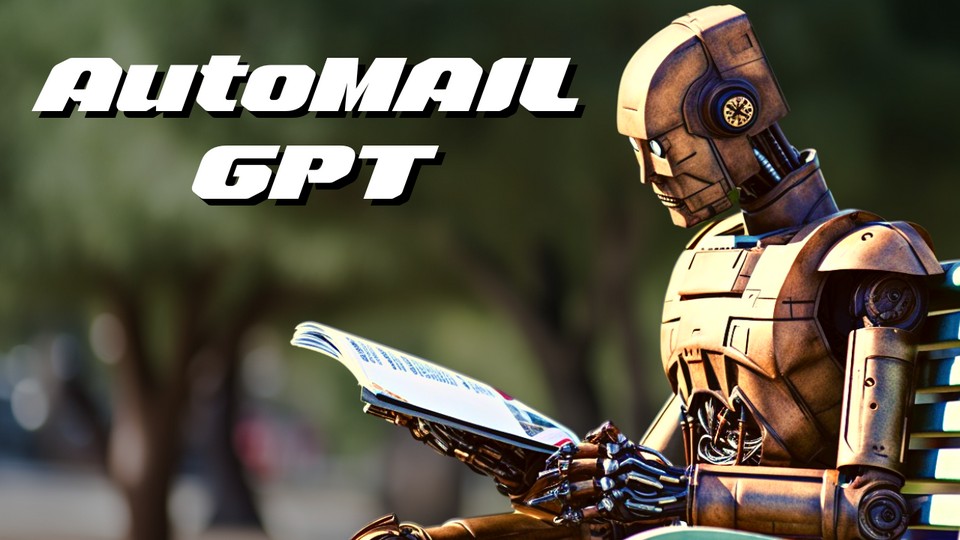Are you tired of spending countless hours crafting your business newsletters, just like I once was? If so, prepare to be transported into a world where this time-consuming task can be completely automated with AI.
Today, I’ll share my journey of how I created an automated AI newsletter, revolutionizing my approach to email marketing. This sleek, professional newsletter is autonomously generated by a Python script using the power of ChatGPT 4.
Read more or watch the YouTube video(Recommended)
YouTube:
Step-by-Step Process to Create an Automated AI Newsletter
To ensure a solid understanding of this AI in email marketing system, let’s begin by understanding the process flow.
- Step 1: Trigger a Python script that uses Google to search for news related to a specified topic. The beauty of this system is that you can customize it according to your needs – insert whatever topic you want your newsletter to focus on.
- Step 2: The information from Google is sent over to ChatGPT to create a more conversational and engaging news summary.
- Step 3: Another Python script reads this news summary. It leverages the Stable Diffusion API to generate an image and uses a specially optimized ChatGPT-4 system prompt to write a well-structured email newsletter.
- Step 4: When all elements are compiled, the Mailgun API sends out the newsletter to your mailing list.
To make this process fully autonomous, we can use the Azure time Trigger, which can be set to a specific time.The script will then automatically run once a day and send out your newsletter.

How to Set Up Your Automated AI Newsletter System
Now, let’s take a look at how to get this system running. Start by feeding your search query into the Python script. This could be any topic you’d like your newsletter to focus on, let’s take ‘AI’ as an example for now. The next step is to input the email address to which you’d like to send the newsletter.
Once these details are set, head over to the terminal and run the script. The system will start gathering information about your search query, a crucial step in automating newsletters with AI, and continue to the next script. If everything goes as planned, you’ll soon see a “Email sent successfully” message.
As the system is flexible, you can easily switch up the topic. The Python script can be edited to replace ‘AI’ with ‘Finance’ or any other area of interest, and then run again. This flexibility allows the system to cater to a variety of needs.
Importance of ChatGPT System Prompts
A crucial part of this newsletter generation process is the system prompts used. These prompts instruct the AI on how to structure the newsletter and significantly impact the final result. The prompt used for our newsletter includes instructions for writing a short, intriguing introduction, formatting the latest news segments, and wrapping up the email with a concluding text.
However, if you prefer a different structure, you can work on customizing the prompts. They offer a great deal of flexibility in tailoring the output to your liking.
Benefits and Applications
The advantages of this system for automating newsletters with AI are numerous. The primary benefit is scalability – the system can scale to whatever extent you need. Once set up, it can run autonomously, barring the occasional need to check for bugs. You also have the flexibility to customize the image in your newsletter using the Stable Diffusion API.
Moreover, by introducing an AI agent, the system can gather more than just search results, offering you a rich source of information.

Conclusion
The era where I spent hours curating my newsletters is rapidly becoming a thing of the past. By leveraging AI technologies, I’ve been able to create an efficient system for automating newsletters with AI, catering to my specific email marketing needs. It’s truly revolutionized my workflow, freeing up valuable time and resources.
But like all technology, my system does require occasional maintenance and debugging to ensure optimal performance. Yet, the time and effort saved, and the convenience offered by this system far outweigh this minor responsibility.
I’m excited about the future potential of AI in email marketing and can’t wait to see what other processes I can streamline next!



How do I access the python script? Even i want to build an automated newsletter. How do I get started? Can you help?
Hi can you please teach how to create this kind of system, along with the python code….. Where to find your tutorials???